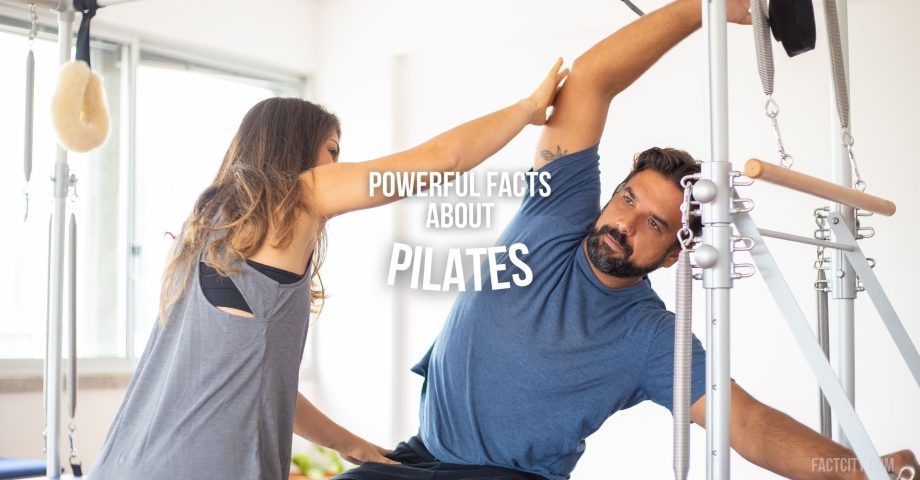It’s fair to say that there are plenty of different ways to stay fit and healthy nowadays – but have you ever considered taking up Pilates before? This physical therapy actually has something of an interesting and varied history – it’s certainly not a modern fad!
Many people swear by Pilates not only to help support their physical wellbeing but also to help them feel better inside. It shares some similarities with yoga in that regard!
Whether you’re completely new to Pilates or practice regularly, we’ve brought together a list of some important facts about this lifestyle booster to help clue you in on what it’s all about.
Before you warm up and get started, then, here are some interesting facts about Pilates you’ll want to make a note of.
1. Pilates is all about strength, endurance, and flexibility.
Pilates is a type of physical therapy that primarily focuses on making the most of your physical form. That is, it’s all about prioritizing the way you move and balance yourself. In many cases, it’s great for boosting fitness and helping people recover from certain injuries.
Therefore, you’re likely to find lots of different pilates exercises to suit your needs and physical profile. It’s worth keeping an open mind and exploring what you’re capable of!
2. It’s frequently compared to yoga, but the practices are different in many ways.
It’s reasonable to get Pilates and yoga mixed up with each other. After all, both are self-guided exercise regimens that focus on strength and pose. However, Pilates is more about the physical side of the exercise, whereas yoga contains spiritual elements that appeal to many people.
One way that Pilates differs from yoga is in the fact that it typically uses a variety of supporting equipment. Yes – yoga enthusiasts often use mats and blocks, too, but there’s a difference in the tools that each type of exercise demands.
3. Pilates dates all the way back to World War I.
It’s true! Pilates is far from being a modern exercise fad that’s caught on in just the past few years. It was, in fact, developed by Joseph Pilates, who invented his eponymous method of exercise to help ensure soldiers were fighting in top physical condition.
Later on, however, Pilates would adjust the regimen to promote the benefits for overall health – and today, it’s used by millions all over the world, soldiers and non-soldiers alike!
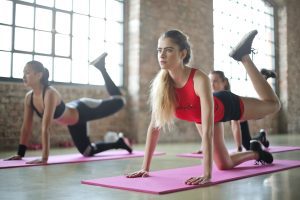
4. Pilates himself had plenty of experience.
Joseph Pilates was certainly an instructor you’d want to look up to. He arguably knew his stuff – he’d spent years working out as a boxer, a gymnast, and a weightlifter.
But that’s not all! Pilates was also known for practicing yoga in his spare time, and he also studied martial arts. Beyond this, you’d also have found him in a different type of ring – as he was a keen wrestler, too!
5. Pilates was determined to overcome a shaky start.
Pilates was said to be so committed to health and fitness because he experienced a fairly rough childhood – in that he was sickly! That means, when he was younger, he struggled with illness and weakness regularly.
Determined to turn things around, Pilates decided to dedicate his life to improving his strength and fitness – and it’s safe to say his determination has improved the fitness of many people around the world, too.
Beyond this, Pilates learned about human anatomy closely and developed a method known as Contrology – which helped to define his exercise recommendations and support his followers.
6. You need to get into good form to benefit from Pilates.
Just like weight training and yoga, form is everything when it comes to making sure the exercise you do in Pilates is effective. Quality over quantity, as they say! That means you could practice Pilates every day and not benefit at all if you’ve got poor form.
That’s why it’s so important to think carefully about the way you position yourself, how you move, the space you have around you, and how you breathe. It’s usually best practice to start learning Pilates from a trained instructor, but from there, you can always follow online programs and videos to hone your craft.
7. Pilates called his practice “Contrology” for an important reason.
We all know the practice as Pilates, but if Pilates himself would have had his way, as mentioned, he would have everyone know his exercises as “Contrology.” He called his practices and ideas Contrology to reflect the fact that you need to have exceptional control over your body to succeed with these exercises.
If anything, Pilates suggested his exercises were all about exhibiting constant control over one’s body during practice. Therefore, it’s something you need to mentally engage with as well as physically!
8. Pilates would lie about his age.
For all Pilates was an honourable man with the best interests of people’s health at heart, believe it or not, he told a common lie throughout his life – he would frequently give people the wrong date of birth if asked!
He had a reason for this. Pilates wanted to ensure everyone knew that his exercises were impressive and that they had incredible benefits – so, he pretended to be three years older than he was so people would marvel at an older man being so physically adept!
9. There’s lots of equipment that Pilates developed himself.
If you have any experience with Pilates, it’s likely you’ve come across plenty of tools and apparatus you can use to exercise complete control over your body. But, what about some of the more interesting bits and pieces the creator himself devised?
Some of Pilates’ most impressive equipment carried some interesting names – for example, can you imagine working out with a piece of equipment called the guillotine? What about the neck stretcher, the iron shoes, or the toe corrector? While they might all sound painful, they all helped to cement Contrology and Pilates into public appeal.
Just make sure you test out pilates equipment carefully!
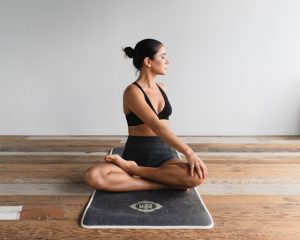
10. One of Pilates’ most influential books was a hit after WWII.
Yes, believe it or not, Pilates’ career as a fitness guru stretched between the two world wars and beyond. He’d written the massively popular “Return to Life Through Contrology” by the time WWII was closing in 1945, some three decades after he’d initially started training soldiers in the practice.
This book was a bit of a refresh for pilates fans and an introduction for others! The book took readers through some of the most classic and effective pilates exercises still enjoyed today – there are around 34 mat exercises you can follow, which Pilates suggested you follow in sequence.
11. Pilates lived a long and fruitful life.
Joseph Pilates’ commitment to Contrology and fitness in general certainly paid off. The fitness legend passed away at the age of 83, in 1967.
Sadly, it was emphysema that claimed Pilates’ life – but, thankfully, he’d lived to such a ripe old age thanks to his commitment to always improving his body, and helping others make the most of theirs.
12. The copyright history over Pilates is a little fuzzy.
Long after Joseph Pilates passed away, court cases brought the actual name of his exercise regime to the headlines. By the year 2000, a high-profile case sought to establish who held copyright, if at all, over the term “pilates.”
Of course, Pilates himself referred to this as Contrology – but the outcome of the case saw the word “Pilates” become commonly used in the public sphere. Specifically, whether one uses the word Pilates or Contrology depends on the individual instructor!
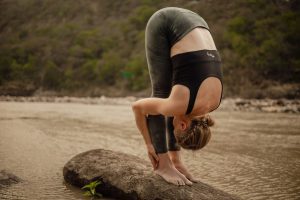
13. Pilates can help with pain relief.
As mentioned briefly, Pilates exercises can often help people rehabilitate from injuries and strains. That’s partly because Contrology helps people to relieve pain in specific areas of their bodies.
For example, studies and practices over the years have shown that people following Pilates tend to benefit from lower back pain than others. It’s thought that Pilates can help people align their cores and strengthen their bodies. This also means that practitioners are less likely to fall or struggle with exercise.
14. Pilates can improve flexibility.
As you might imagine, taking on Pilates exercises means bending and stretching quite a bit – and, as a result, people who practice regularly find they are more supple and flexible in the long run.
This is hugely beneficial for most people – extra flexibility means you’re less likely to get injured, and you’re more likely to retain a full range of mobility as you age. Therefore, it’s never too late to get into Pilates – and, as Joseph Pilates himself proved, you can be a highly flexible specimen into a ripe age!
15. Pilates helps you become aware of your body.
As strange as that statement might sound, bodily awareness is vital for healthy exercise and for maintaining an even healthier lifestyle. You might already be aware of mindfulness practices and meditation – and that, of course, body awareness is a big part of yoga.
However, when you practice Pilates, you can also gain better awareness of your body and how it performs. Specifically, Pilates exercises can help you become more aware of your breathing.
This isn’t so much to help you perform better at Pilates, rather, it’s good practice to help reduce stress and anxiety, both of which can have negative repercussions for your physical form.
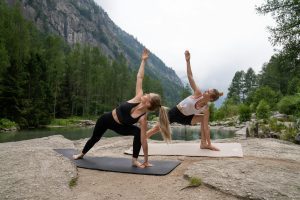
16. Pilates could improve your mental health.
As mentioned, Pilates can help you control your breathing and therefore reduce potential stress and anxiety. As such, it’s reasonable to expect that your mental health benefits in the long run, too!
Exercise can help to improve mental wellbeing in many ways – getting your blood pumping isn’t just great for releasing endorphins. Exercising regularly, feeling physically better and enjoying the results of Pilates can help to boost self-esteem, too.
Therefore, if you’re already seeking support for your mental health, you might consider Pilates a supplemental way to aid your journey.
17. Pilates isn’t an offshoot of yoga.
As mentioned much earlier in this guide, yoga and Pilates are pretty different from each other. However, that hasn’t stopped some people from believing that Pilates was actually an offshoot of yoga.
Yes – yoga has been around for centuries – and Pilates is an invention from the 20th century – but Joseph Pilates invented his exercises as a completely different set of motions. Of course, Pilates was a yogi at one point, but the fact still stands – Pilates was developed entirely separately from yoga!
18. Pilates repurposed furniture for some of the earliest and most famous exercise equipment.
Yes – while plenty of us out there who exercise at home might have used the odd bit of furniture here and there to support us, we’re not the first ones to promote this idea. In fact, Joseph Pilates made use of a specific type of chair that became synonymous with his practice.
We’re referring, specifically, to the Wunda chair. This highly adjustable piece of kit was actually designed for exercise and relaxation! The apparatus was particularly useful as you could simply turn the chair over and use the tools underneath when undertaking Contrology. Pilates was keen on helping people save space, it seems!
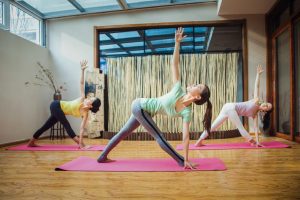
19. Pilates is all about focus.
It’s easy to assume that you can just leap onto a Wunda chair and start practicing Pilates. Naturally, it’s easier than you think to get started – but you also need to make sure your brain’s in the game.
Pilates designed his exercises to ensure people were able to sharpen their minds while honing their bodies. That means, while exercising, you’ll need to keep your brain focused on everything you’re doing. That means not getting distracted by your playlists or what you’re thinking of having for dinner!
20. Pilates wants you to do homework.
Homework doesn’t start and end at school! There’s another reason why the instructor developed the Wunda chair – so that people could take his exercises home and practice them on their own time.
Pilates was an inspiring man not just for his exercises – but for his drive, focus, and determination. It’s these elements that helped him turn his fitness around, and which ensured his followers could benefit from the same practices for the decades to come.
21. It’s never a good idea to get into Pilates without advice.
Ok – if you have any kind of interest in Pilates, you might well have explored social media, guides, and videos online to learn more about form and how to make the most of the practice. However, it’s never a good idea to leap straight into this type of exercise without some form of careful preparation first.
For example, it’s highly recommended you start by asking for help from a doctor or a physician before you get into Pilates for real. After all, your doctor will tell you whether or not they feel the exercise will support you, and will advise you of any conditions or concerns that might stop you from going right ahead.
22. You should choose a qualified instructor before you start Pilates.
Yes – Pilates is a self-guided series of exercises, and Pilates might be inspiring enough in his original guides – but it pays to work with an instructor who can ensure you have the right form, that you’re benefiting properly from the exercises, and that you’re not at risk of seriously hurting yourself.
Therefore, if you’re interested in exploring Pilates on your own, be sure to look beyond TikTok and YouTube. Look to sign up for a guided class and take on advice from a seasoned expert. In time, you might become an expert in your own right – but we all have to start from somewhere, don’t we?
23. Some Pilates fans use mats, while others use reformers.
The two styles of Pilates follow the use of either mats or reformers to support oneself during exercise. However, while you might assume a mat seems comfier, this isn’t always going to be the case.
Therefore, make sure to try out a pilates method that suits your body and your exercise needs with the help of instructor guidance.
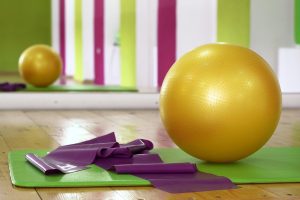
FAQs About Pilates
Is Pilates hard for beginners?
Pilates takes a lot of hard work, focus, and determination, though it’s easy enough for beginners to pick up the basics at home. However, some people find it much easier to follow instructors. From a health perspective, it’s generally recommended beginners seek instructor help for the easiest start.
Can Pilates help you lose weight?
Yes, some studies show that Pilates can effectively help people reduce their body fat and weight, though the exercises were more effective in overweight and obese people. It's always a good idea to ask a doctor for advice before you consider any new weight loss regimes.
How many times a week should a beginner do Pilates?
It's wise to practice once or twice a week to begin with, but depending on how you adapt to Pilates and the advice you receive from experts, you might wish to increase this. It's certainly wise not to overdo it and to understand your limits.
Further reading
https://www.self.com/story/5-things-to-know-before-you-take-pilates-classes
https://www.pilatesfoundation.com/about-pilates
Do you know any fun facts about Pilates? Share them in the comments below!
